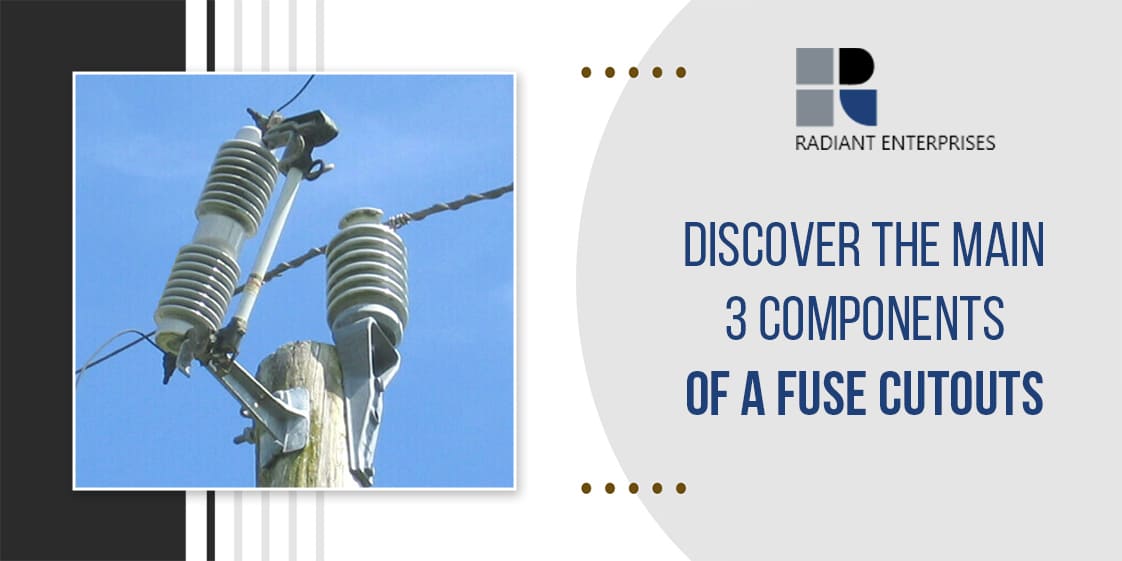
Fill all information details to consult with us to get services from us

Fuse Cutouts are a type of electrical protection device used on overhead line systems to shield distribution transformers from power spikes. In order for these devices to work, they must be installed in series with the transformer's feed cables, with the fuse link protecting the wires from damage. The fuse holder is secured to the cutout body by the link, which passes through the fuse holder's tubular hinge. When the fuse holder is overloaded, the link will melt and split, causing the fuse holder to fall freely, swing down on the hinge, and hang vertically. Transformer maintenance typically necessitates the removal of fuses, hence most Fuse Cutouts designs include a little ring made of metal over the fuse holder for easy manual disconnection.
Overhead power supply systems utilise distribution transformers erected on pylons to transmit electricity from points of interconnection on the lines to end users. Overcurrent damage from the regular power surges encountered by overhead power lines is a particular threat to these transformers and the consumer terminals they feed. In addition to protecting the transformer from power surges, the Fuse Cutouts installed on overhead line transformers can be used to cut power to the transformer temporarily. The fuse's design also provides a visible signal of the condition of fault from great distances, which aids in pinpointing the source of the problem quickly.
Even though there are a great number of distinct permutations of the fundamental Fuse Cutouts idea, the fundamental rules governing its operation have not changed. In most cases, the devices are made using a couple of contacts that are separated by a thick insulator made of porcelain. The lower contact is constructed to receive the non-conductive tubular fuse holder’s end that is hinged. This design allows the holder to revolve freely on the contact assembly. The holder is fastened to the higher contact by way of a fuse link, which runs via the fuse holder as well as it is coupled to the upper as well as the lower contact assembly.
The fuse holder is held in place between the lower as well as upper contact assemblies, and the fuse link provides a conductive connection between them. The upper contact receives the power from the overhead line, and the bottom contact supplies the transformer with power. This configuration allows power to be supplied to the transformer from the higher contact, via the fuse link, to the lower contact. The fuse holder is designed to swivel on its hinge and drop away from the higher contact in the event of a power surge on the overhead wires, essentially terminating the power that goes to the transformer. To make it easier for the blown fuse to fall freely, most assemblies of the Fuse Cutouts are installed at an angle or on a horizontal plane.
When a fuse blows, the holder comes loose and serves as a visible warning sign so that maintenance workers may respond quickly. A brass ring is typically attached to the fuse holder's unhinged top end and is a standard feature in designs with Fuse Cutouts. When the need arises, maintenance staff can isolate the transformer as well as manually remove the fuse.
Fuse Cutouts are devices that are used to protect electrical systems and equipment from damage caused by overcurrent conditions, such as short circuits or overloads. If you are looking for the best quality Fuse Cutouts, get in touch with the most trusted as well as distinct Fuse Cutouts supplier in India, Radiant Enterprises.
Fuse Cutouts are used in a variety of applications, including:
Fuse Cutouts are commonly used in electrical distribution systems, such as those found in homes, businesses, and industrial facilities, to protect against overcurrent conditions.
Fuse Cutouts are used in power transmission and distribution systems to protect against overcurrent conditions and to ensure the safe and reliable operation of the system.
Fuse Cutouts are used in renewable energy systems, such as solar and wind energy systems, to protect against overcurrent conditions and to ensure the safe and reliable operation of the system.
Fuse Cutouts are used in industrial equipment, such as motors and generators, to protect against overcurrent conditions and to ensure the safe and reliable operation of the equipment.
Fuse Cutouts are used in automotive electrical systems to protect against overcurrent conditions and to ensure the safe and reliable operation of the vehicle.
Fuse Cutouts are used in marine electrical systems to protect against overcurrent conditions and to ensure the safe and reliable operation of the vessel.